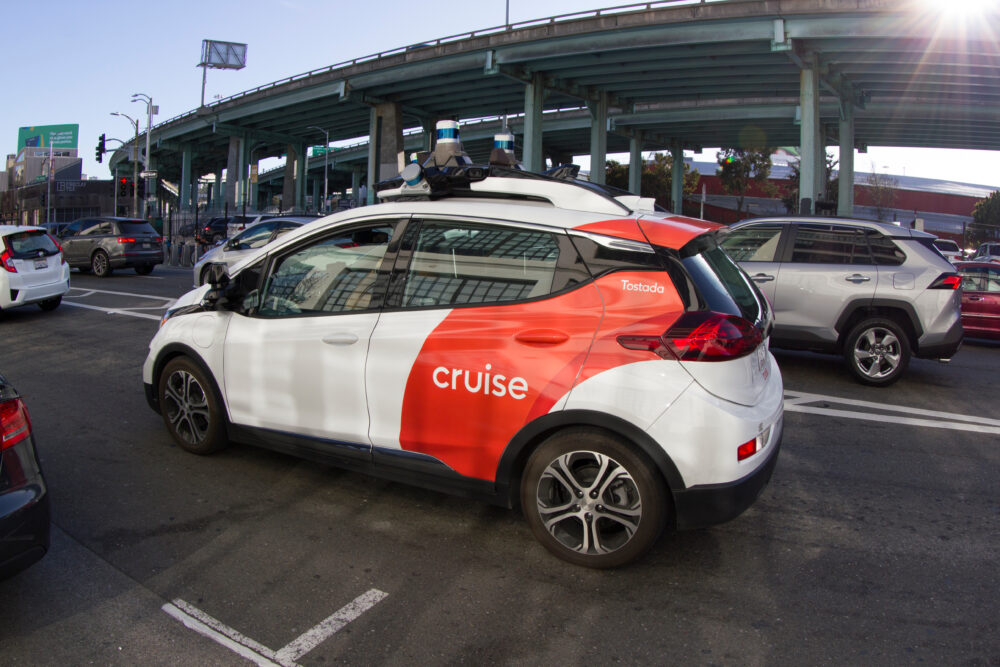Cruise Robotaxi Service Suspended in California, Amid Safety Concerns With Driverless Cars
California DMV says Cruise robotaxi vehicles are not safe for public operation, after a tragic accident involving one of the driverless cars

The tech startup Cruise has had its operating license suspended in California, after one of its driverless robotaxi vehicles ran over a woman and dragged her 20 feet.
The California Department of Motor Vehicles (DMV) issued a press release on Tuesday, which announced the immediate suspension of deployments and driverless testing permits by Cruise LLC following the accident.
Cruise robotaxis are autonomous self-driving vehicles that operate like standard taxis, but without human drivers. The tech startup received approval to operate autonomous vehicles in San Francisco only two months ago.
San Francisco Woman Run Over by Driverless Robotaxi
The accident occurred on October 2 in San Francisco, when another human-driven vehicle hit a female pedestrian and threw her into the path of a Cruise robotaxi, before fleeing the scene. The Cruise vehicle then hit her, stopped, and attempted to pull over, dragging her approximately 20 feet.
The victim involved in the incident was extricated from underneath the vehicle using safety tools and was taken to the hospital, suffering traumatic injuries. The hit-and-run human driver of the vehicle that originally struck the pedestrian has not been caught.
Cruise said the self-driving robotaxi braked aggressively after the other driver hit the pedestrian. But because it detected a collision in its path, the vehicle tried to pull over to avoid further safety issues, dragging the pedestrian in the process.
Officials with Cruise, a subsidiary of General Motors, said the evasive maneuver the vehicle performed was built into the vehicle’s software to promote safety and is required by both California and federal regulators.
However, the California DMV now says the autonomous taxis are “not safe,” and Cruise misrepresented safety information about the self-driving technology of the vehicles.
The DMV said Cruise did not provide the full footage of the incident and failed to include the footage of the vehicle dragging the pedestrian. It also did not disclose the vehicle’s pull-over technique, which led to the car dragging the woman. The agency also said it only obtained full footage nine days after the crash.
Cruise Robotaxi Service Suspended
“The California DMV today notified Cruise that the department is suspending Cruise’s autonomous vehicle deployment and driverless testing permits, effective immediately,” the California DMV press release states. “The DMV has provided Cruise with the steps needed to apply to reinstate its suspended permits, which the DMV will not approve until the company has fulfilled the requirements to the department’s satisfaction.”
Cruise would have to appeal the decision or provide information about how the company addressed technical deficiencies to get its operating license back, the California DMV indicates.
But the California Public Utilities Commission also suspended Cruise’s permits to carry passengers in the city of San Francisco, while it conducts its own investigation into the company’s operations and technology.
Until the investigations are complete, passengers will not be allowed to ride in autonomous Cruise robotaxis. Cruise can continue to operate robotaxis in San Francisco with human safety drivers behind the wheel, which is how the company initially began testing self-driving cars and received regulatory approval.
There is no specified end date for Cruise’s suspension.

Did You Know?
Millions of Philips CPAP Machines Recalled
Philips DreamStation, CPAP and BiPAP machines sold in recent years may pose a risk of cancer, lung damage and other injuries.
Learn MoreThe National Highway Transportation Safety Administration has also launched an investigation into Cruise autonomous driving systems after at least four accidents or close calls involving robotaxis and pedestrians were reported.
The San Francisco Fire Department said the agency was aware of at least 55 incidents involving self-driving cars since the start of 2023. This included an incident where a robotaxi was involved in a crash with a fire truck, which ran a red light on the way to an emergency call.
Driverless Vehicle Investigations Raise Safety Concerns
There have been a number of other high-profile self-driving car accidents that have resulted in severe, and sometimes fatal injuries since the technology emerged.
In February, a Tesla self-driving recall was issued for certain vehicles equipped with the technology, after faulty software caused several fatal crashes. An earlier Tesla recall in November 2021 was issued after a computerized braking system update caused some models to stop unexpectedly in traffic.
In response to the growing safety threats posed by the evolving technology self-driving cars, the NHTSA has launched several self-driving car accident investigations in recent years, and now requires manufacturers to report car accidents when the cutting-edge technology goes wrong.
Want a weekly update on top lawsuits, recalls & warnings?
"*" indicates required fields





0 Comments